Three Ways Web3 Will Change Education For Good
Key Points
-
Web3 provides new pathways for learning, earning, and living.
-
Our students need to have equitable access to web3 before they join the workforce.
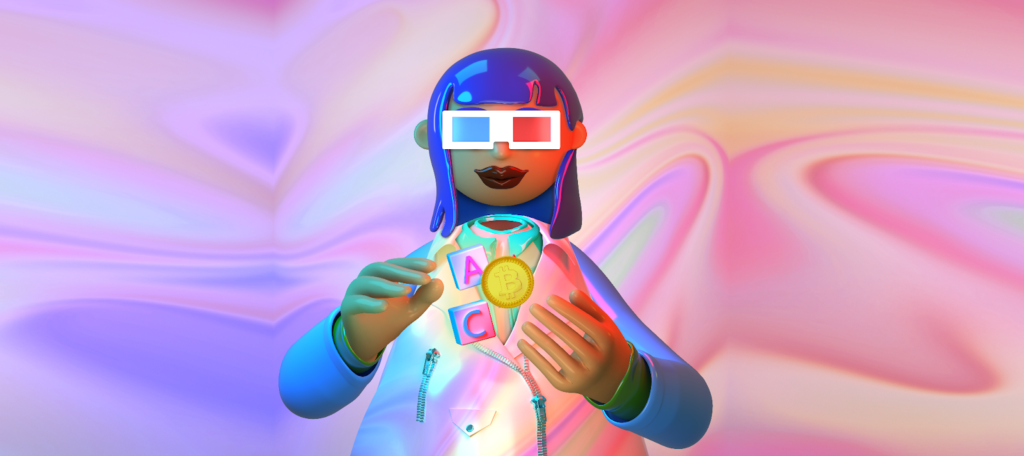
By: Vriti Saraf and Dr. Mike Peck
Are you a coffee drinker? Well, Starbucks just announced the launch of their web3 rewards program. Maybe you’re a student… Pearson is selling their textbooks as NFTs now. Or perhaps you’re into fashion. Gucci is accepting a cryptocurrency token called “apecoin” for its products.
Today, every facet of the world market is exploring or building on something called web3. If you’re not deeply immersed in this new technology, you might be thinking one of three things:
- What is web3?
- Why should I care?
- Is web3 a fad?
Let’s cut through the jargon and get to the core of it: Web3 is the evolution of the world wide web. The web has gone through three iterations as a result of emerging technologies.
Web1 (Read)
The first generation of the web allowed users to consume information from largely static web pages. Most people didn’t know how to code, many didn’t have access to high speed internet, and some didn’t have access to computers at all. This meant modest adoption of the web.
Web2 (Read, Write)
As access to the web became easier with the adoption of mobile devices and nearly ubiquitous high speed internet, we saw the emergence of social media, which changed how we engaged with the web and with one another. Without knowing code, we were able to build virtual identities, unveil our inner thoughts to the world, build global relationships, and find resources for our learning, earning, and living.

Web2 also came with trade offs. It allowed big corporations to poach and store our personal identifying information and user data into centralized databases. Free products afterall, had a price. As sculptor Richard Serra said in 1973: “if something is free, you’re the product”.
Clickbait, doom scrolling, fake news, and misinformation became key ways for advertisers to monetize off of our engagement.
Web3 (Read, Write, Own)
Today, there is a beacon of hope for reversing the culture of monopolies and ads through the next iteration of the web. You’ve probably heard about blockchain, NFTs, metaverse, cryptocurrency, and other concepts that are often described with complex jargon. These technologies have actually been around for decades. Blockchain was invented in 2008, metaverse was coined in 1992, and virtual gamified environments have been around since 1962. We are finally ready for this confluence of tech because today, most of our activity lives on the web, and because COVID helped accelerate our virtual interactivity.
Web3 is grounded more in ethos than it is in tech. Here are the most important principles in web3:
- Web3 is about decentralization and self-organization.
- Web3 is about digital ownership
- Web3 is about transparency.
- Web3 is about human connectivity.
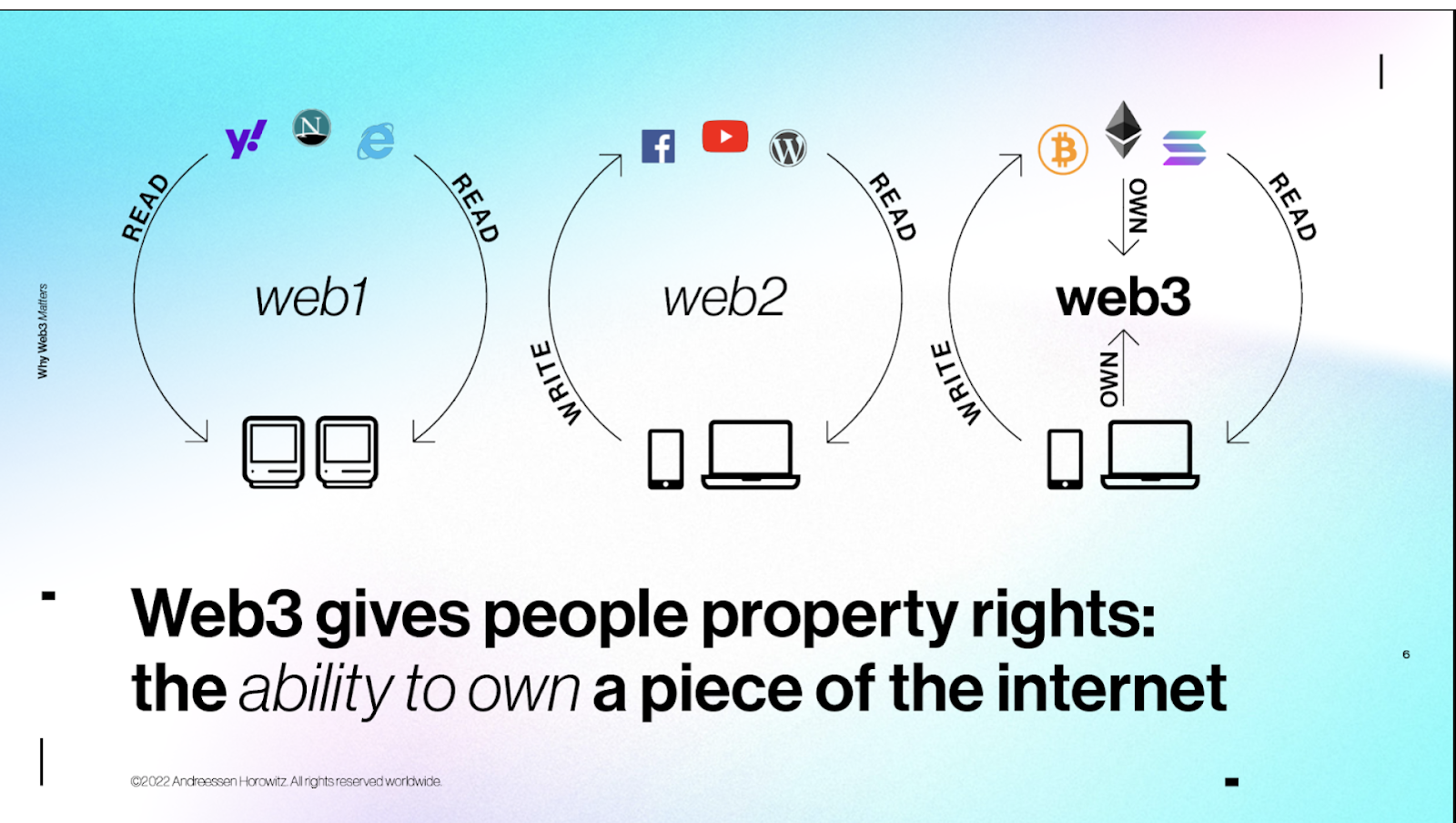
New Pathways for Learning, Earning, & Living
So let’s get more practical. Why is web3 so important for the future of education? Here’s what the future could look like:
1. On-chain Credentials
“The unbundling of learning has triggered the decentralization of credentials.”
The great unbundling of education started when the web emerged. Open access to the world’s knowledge gave rise to alternative schooling models, supplemental boot camps, online universities, and post-secondary learning by big corporations. The web has empowered us to choose how, when, and where to learn.
COVID accelerated this movement and brought greater numbers to online learning. But this rapid expansion of learning opportunities also instigated a challenge: how do we verify and present our learning from numerous providers?
Before web3, when we wanted access to transcripts, credentials, and diplomas, we called our bursars. We verified our personal identifying information on the phone or in person, we paid a fee, and were given a physical document with the institute’s watermark. With multiple institutes came multiple pieces of paper.
Today, that system is moot.
The unbundling of learning has triggered the decentralization of credentials. web3 enables credentials to live in a wallet that is owned by us. Blockchain technology, which is a decentralized and secure way of recording transactions and data online, is producing solutions for verification of credentials (the watermark) that live on a distributed ledger (decentralized access), and is attached to your identity.
On-chain credentials allow us to streamline the certification process for learning. It also enables employers to seek out talent based on competencies and metadata. You can think of it as a verified and reliable version of ‘LinkedIn endorsements’.
In early August, Maharashtra, the third largest state in India (with a population of half the size of the U.S.) eliminated the inefficiencies of transcript processing by 1,000 personnel, by issuing 100,000 verifiable diplomas on the Polygon blockchain.
The rapid adoption of strong infrastructure to support decentralized credentialing is both a signal and an important aid to the future of unbundled learning.
2. Decentralized Autonomous Organizations:
“Today, there are DAOs buying land to start new cities, DAOs as recreational and social clubs, DAOs saving the environment, DAOs as universities, and even a DAO for educators.”
Post-industrial era, we’ve had several attempts at decentralization. Think co-ops, communes, free-lancing, and home-schooling. Web2 elevated these attempts through self-organized groups on Meetup and Facebook, the creation of online businesses, and access to learning resources through Khan Academy, Coursera, and other MOOCs.
So when we talk about decentralization in web3, we’re not talking about something new. But this is the first time we’re creating decentralized systems with technical infrastructure to support global engagement and community ownership.
Enter, DAOs, or decentralized autonomous organizations.
The goal of a DAO is to resemble a scaled co-op. It uses blockchain to automate voting processes and fund disbursements, runs business models using cryptocurrency, publicly exposes the treasury so corruption is immediately evident, and through tokens, gives ownership rights to the community.
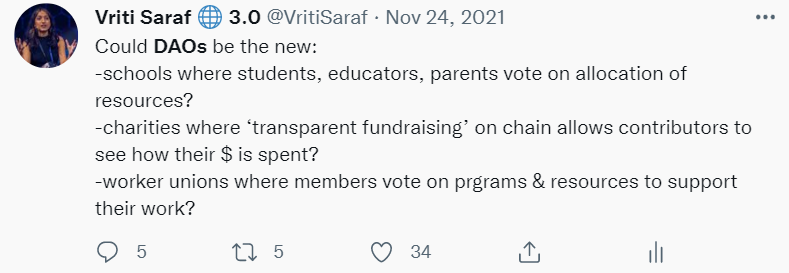
DAOs can be solutions for schools (where students and teachers have voting power), non-profits (where crowd-funding through NFTs is the main funding mechanism), and unions (where transparency and automation of voting systems reduce interference and corruption).
Ed3 DAO is the first DAO for educators, by educators. Its ultimate goal is to help educators become the catalysts for evolving education. As a non-profit, Ed3 DAO offers verified micro-credentialing courses for web3 topics, an annual web3 in education unconference, an active and curious community, and eventually, an accelerator program for educators to solve massive problems in education. The magic of Ed3 DAO, and other communities like it, is that the community benefits as the DAO grows through shared contribution and shared ownership that is often reflected in the use of social tokens.
The power of DAOs lay in the ethos of operation. Transparency of transactions, focus on human connectivity, and community ownership of decisions and actions make it the ideal model for learning organizations.
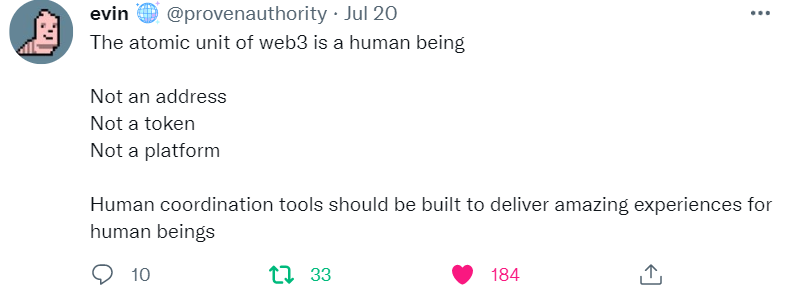
In the case of Ed3DAO, every member is incentivized to help catalyze change in education and grow the DAO because they benefit both intellectually and fiscally as the DAO succeeds. In the case of a DAO school, every student, teacher, and parent is able to contribute toward school outcomes because they are responsible for the school’s success, and in turn, their own success in a very tangible and immediate way.
3. Metaverse Environments
“The future of education in the metaverse is personalized, dynamic, human-centered, problem-based, immersive, and self-driven.”
Do you remember The Magic School Bus? Ms. Frizzle’s stellar sense of fashion wasn’t the only reason she became an iconic figure. She modeled the most optimal form of emergent, student centered learning, to ever exist.
Think back… The daily adventures of The Magic School Bus always emerged from a student question or curiosity. Ms. Frizzle brought students to a dynamic place to answer that question. She then let her students choose their own paths and solve their own problems. At the end, several academic and social emotional lessons were learned, reflected upon by the students themselves.
This is the goal of the metaverse. The future of education in the metaverse is personalized, dynamic, human-centered, problem-based, immersive, and self-driven.
Today, most students learn from static texts inside the walls of their classroom, under didactic curricular models. It’s a one-size fits all strategy created during the industrial era. The use of virtual environments can change that. Imagine simulating spelunking, the eradication of mosquitos, the beating of a human heart, or even simply, practicing language with an avatar from another world.
Integration with blockchain and tokens in the metaverse has the potential to simulate practical life skills, too. Students can experiment with micro-economies, build small businesses, create micro-cities and infrastructure, explore financial literacy, and more. And with decentralized access, anything students or teachers build will be their own IP for resale.

The future of learning will emerge from web3
In the past year, billions have been invested in web3 infrastructure across finance, manufacturing, fashion, environmental solutions and more. Considering the impact of the workforce on education, we are not far from web3 infiltrating into teaching and learning.
The more informed educators and parents are, the better the impact of these technologies will be. And for our learners, especially for those who need more equitable access to workforce preparation, it is essential that we begin to have conversations about web3 in our schools.

Vriti Saraf (@vritisaraf) is the CEO & founder of k20 Educators, a metaverse space for learning, which has been recognized as the world’s top 200 most innovative edtech companies by GSV. She is also a co-founder of the first community organization on blockchain for educators, by educators, called Ed3 DAO.
Dr. Mike Peck (@edtechpeck) is a co-founder of Ed3 DAO, the first DAO for educators, by educators. He is also a technology leader at a public school where he works with administrators, teachers, students, and community members to leverage digital learning.
This post is part of our New Pathways campaign sponsored by ASA, Stand Together and the Walton Family Foundation.
Guest Author



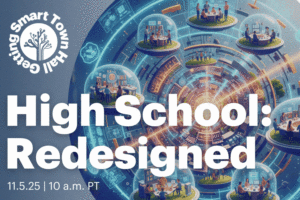
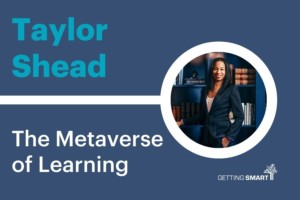
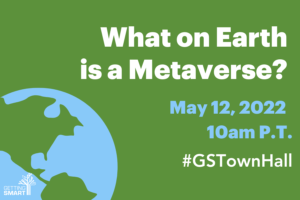
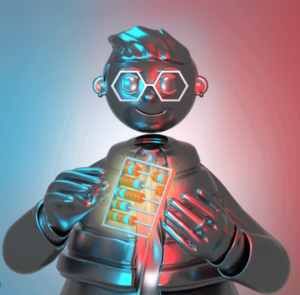
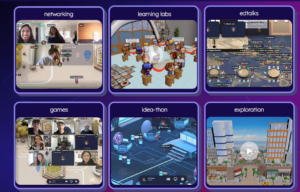
Julia
What of Meta Collective?... What do they do on the meta verse?
Bhavika
HI, thanks for sharing some great information about web3 development.